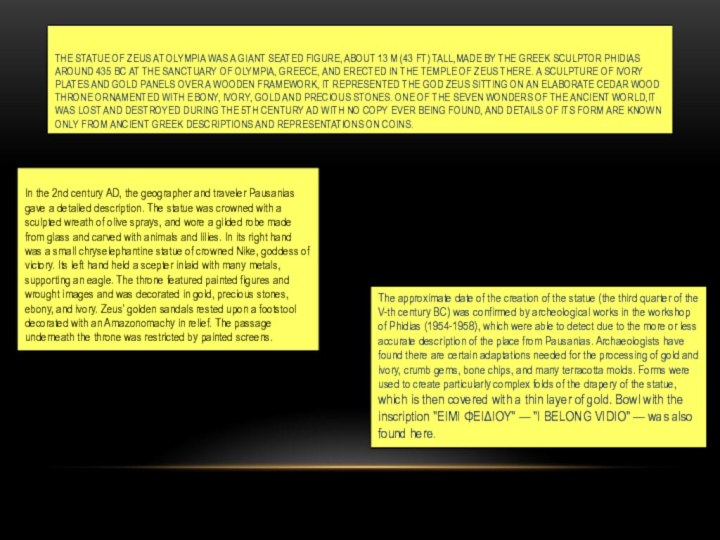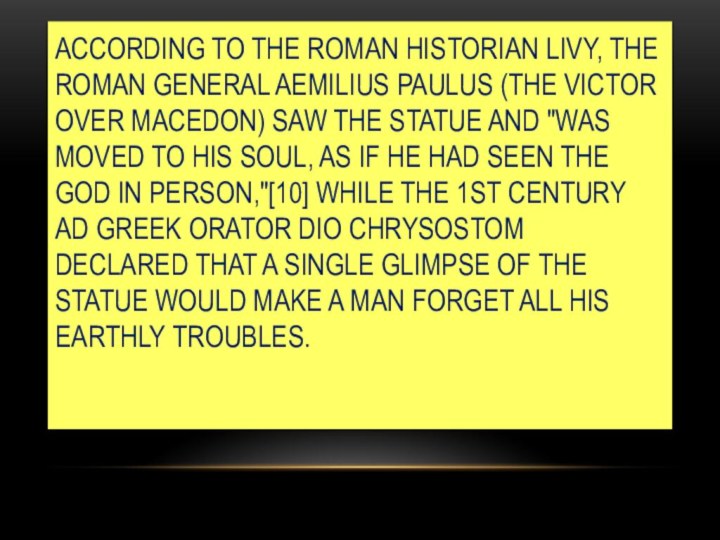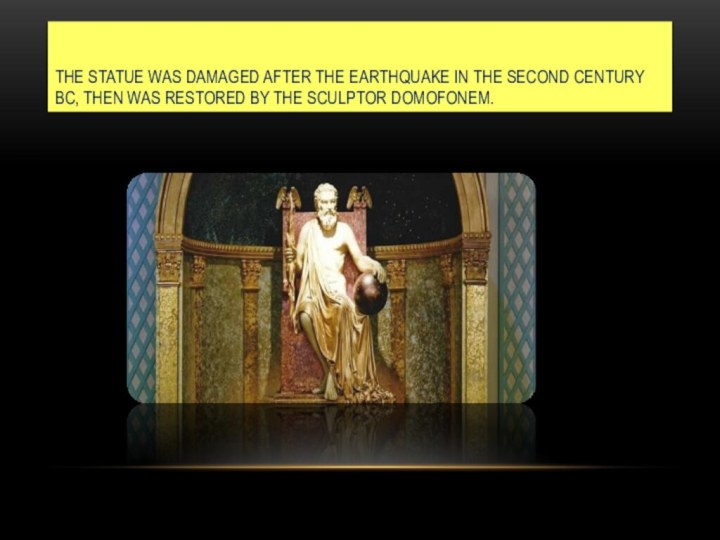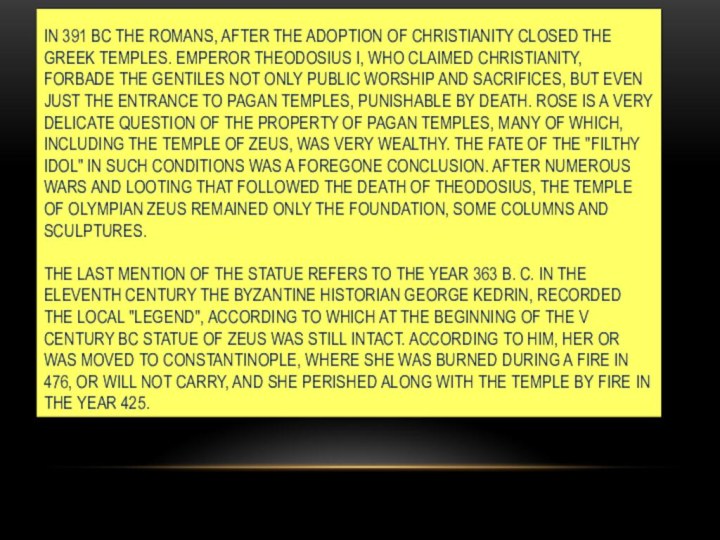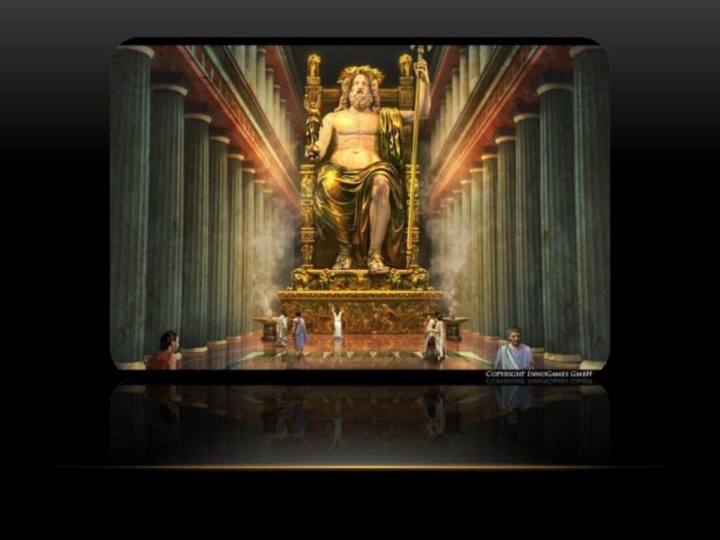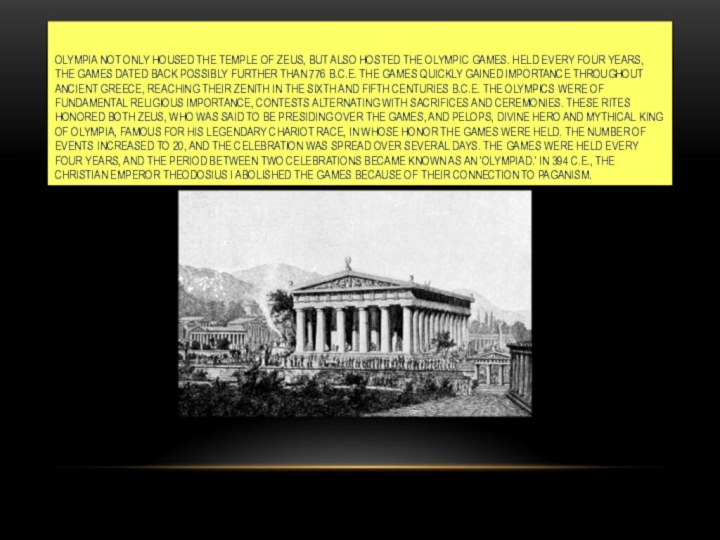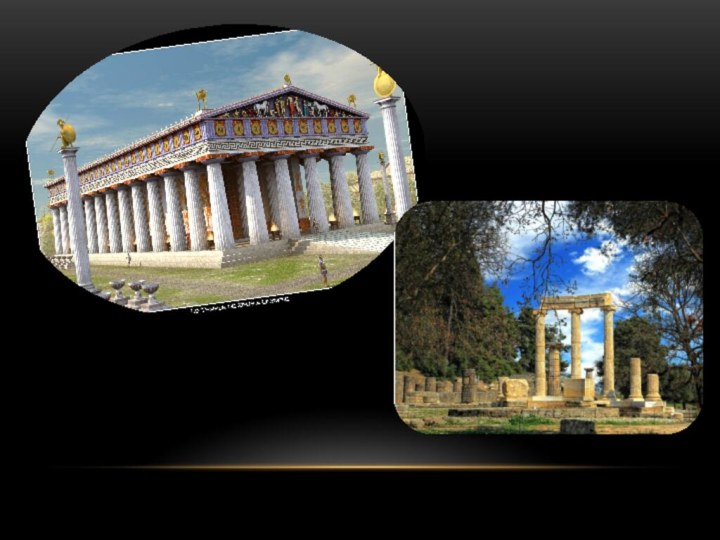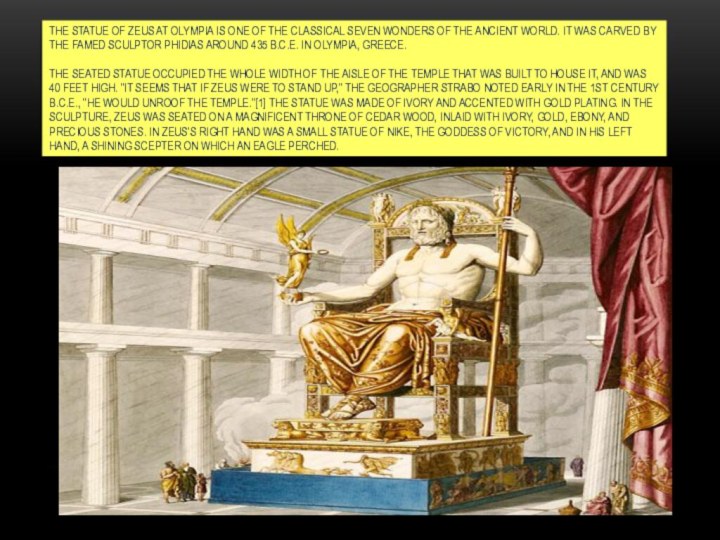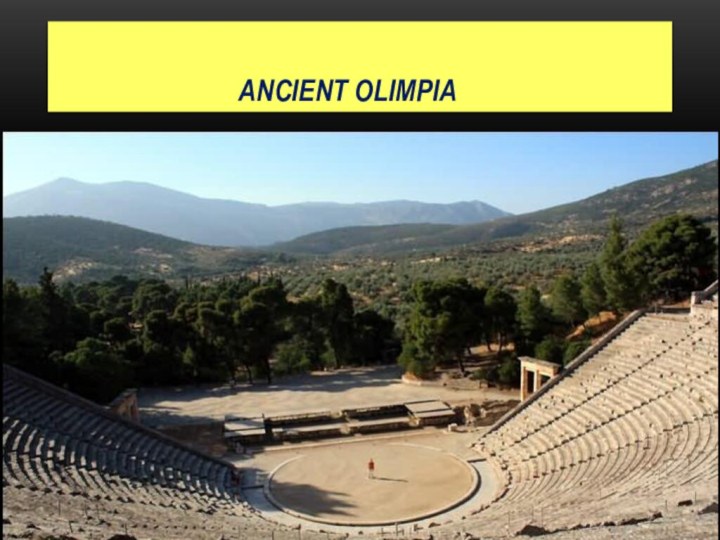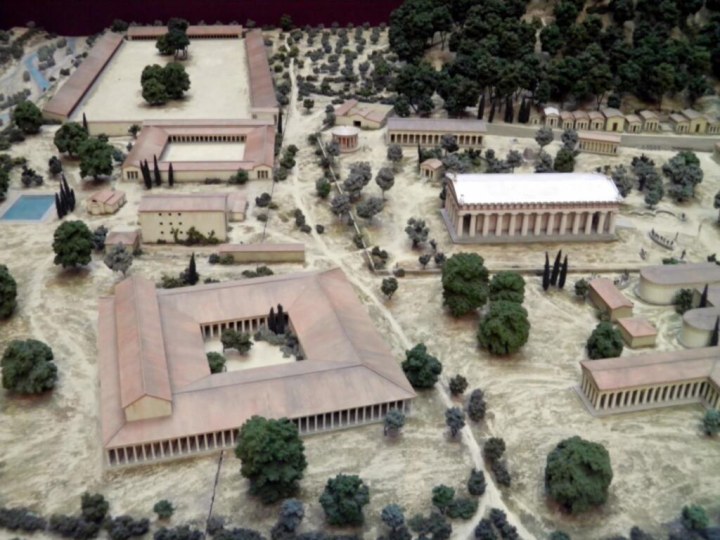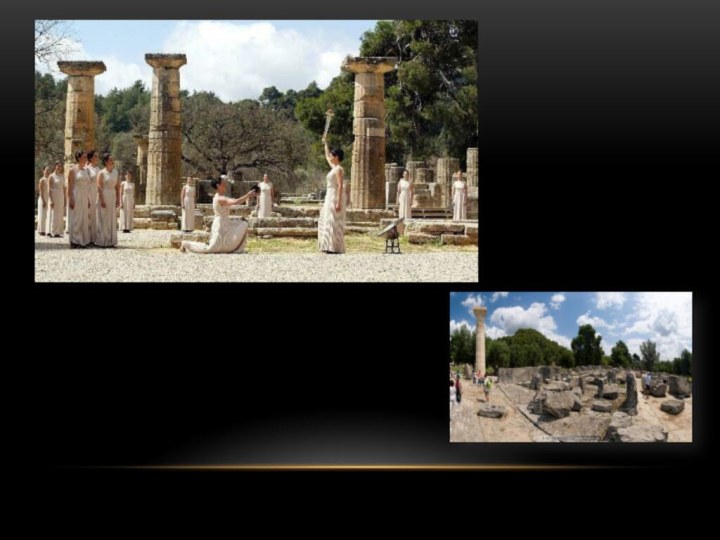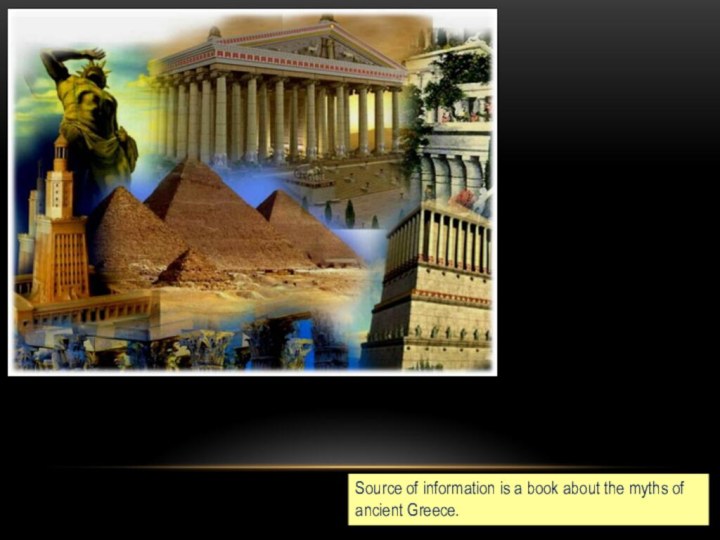giant seated figure, about 13 m (43 ft) tall,made
by the Greek sculptor Phidias around 435 BC at the sanctuary of Olympia, Greece, and erected in the Temple of Zeus there. A sculpture of ivory plates and gold panels over a wooden framework, it represented the god Zeus sitting on an elaborate cedar wood throne ornamented with ebony, ivory, gold and precious stones. One of the Seven Wonders of the Ancient World,it was lost and destroyed during the 5th century AD with no copy ever being found, and details of its form are known only from ancient Greek descriptions and representations on coins.
In the 2nd century AD, the geographer and traveler Pausanias gave a detailed description. The statue was crowned with a sculpted wreath of olive sprays, and wore a gilded robe made from glass and carved with animals and lilies. In its right hand was a small chryselephantine statue of crowned Nike, goddess of victory. Its left hand held a scepter inlaid with many metals, supporting an eagle. The throne featured painted figures and wrought images and was decorated in gold, precious stones, ebony, and ivory. Zeus' golden sandals rested upon a footstool decorated with an Amazonomachy in relief. The passage underneath the throne was restricted by painted screens.
The approximate date of the creation of the statue (the third quarter of the V-th century BC) was confirmed by archeological works in the workshop of Phidias (1954-1958), which were able to detect due to the more or less accurate description of the place from Pausanias. Archaeologists have found there are certain adaptations needed for the processing of gold and ivory, crumb gems, bone chips, and many terracotta molds. Forms were used to create particularly complex folds of the drapery of the statue, which is then covered with a thin layer of gold. Bowl with the inscription "ΕΙΜΙ ΦΕΙΔΙΟΥ" — "I BELONG VIDIO" — was also found here.

